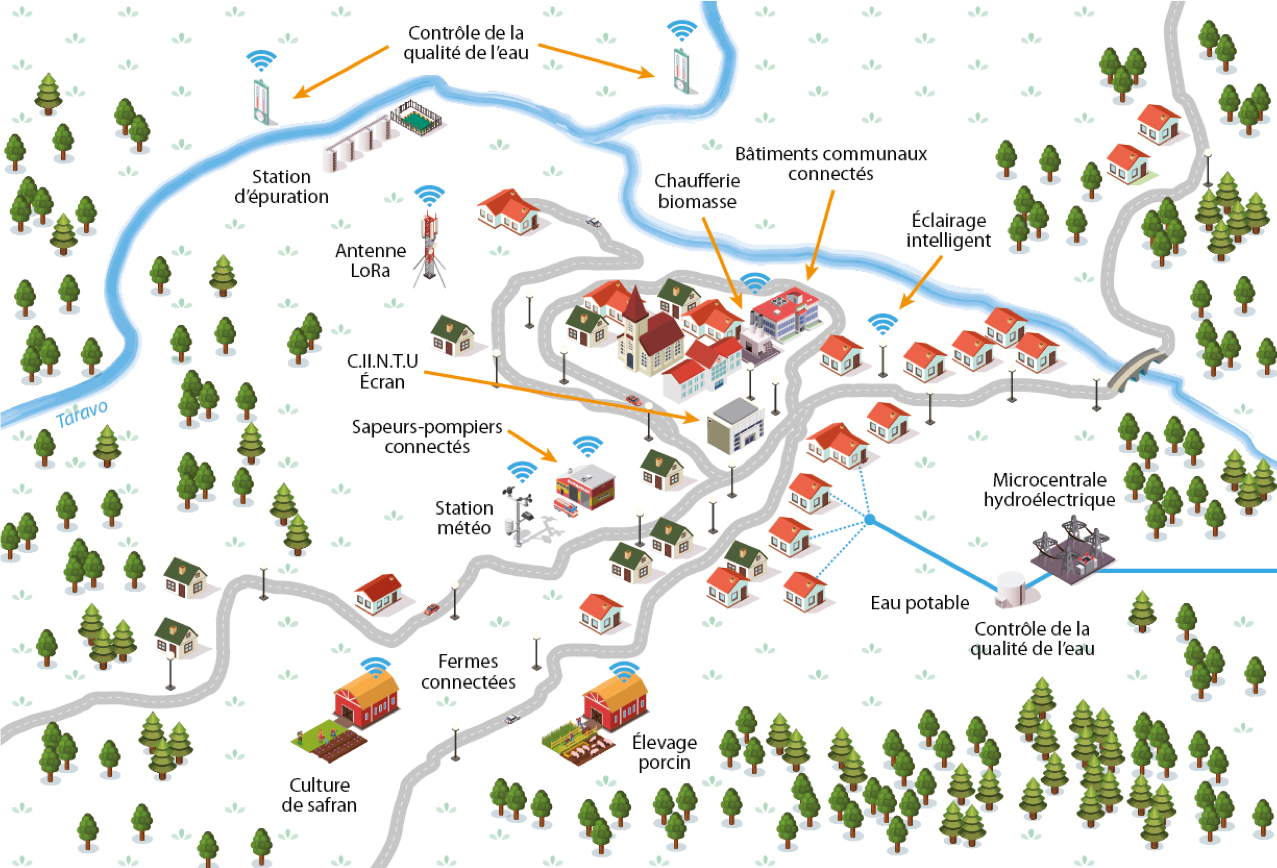Cozzano: a sustainable Smart Village
Cozzano is a community of 270 inhabitants located in the high valley of Taravo in southern Corsica. The village started its energy transition 20 years ago by investing in sustainable production. Through the Smart Village concept, local authorities want to put digital technologies at the service of energy sustainability to accelerate the village’s transition.
Smart Paesi, digital technology promoting sustainable development
Cozzano started its energy transition 20 years ago by investing in sustainable energy production, especially through biomass heating and solar panels. Wishing to continue its efforts in sustainable development, the municipality of Cozzano got involved in the Smart Paesi project – literally Smart Village in Corsican. Thanks to the sustainable energy production already in place, this local project intends to accelerate the transition of Cozzano using digital tools. By using connected devices and collecting environmental data, Smart Paesi’s partners want to increase the climate and energy resilience of the village.
The project, designed to be “inclusive but not intrusive”, was developed with the inhabitants and the municipal team. Several actions are carried out in parallel to collect data, visualise and model them in order to optimise the management of the different natural resources. The new LoRa technology has been deployed in the municipality: the low-energy long-range wireless technology, often used for the Internet of Things and the study of natural phenomena.
Awareness-raising and support to decision-making
Wireless sensors for fine particles and ozone were installed on the balcony of the town hall to measure the air quality in the village and to assist local authorities in taking environmental decisions.
An (anonymous) energy consumption data collection system was set up. Digital technology, and in particular Open Data, is increasingly being used to support the energy transition, as it enables to analyse the consumption of resources. To make the data accessible to all, project’s researchers developed a simple data visualization tool, making possible to raise awareness on energy savings by informing citizens in real time whether their consumption is up to standards or whether they are over-consuming, with a simple green or red colour code. A simulation tool was also designed; on the basis of current data, it enables to anticipate the future evolution of the village’s energy consumption and helps local authorities to adapt its energy policy.
Awareness-raising activities are also carried out in the school in Cozzano. Their aim is to engage children’s thinking on sustainable development and resources consumption, to introduce them to digital technology and its possible uses (Artificial Intelligence, Open data) but also to include them in the project and communication through the school’ s newspaper.
Resilience to natural hazards and optimisation of agricultural resources
Two weather stations were installed to collect meteorological data useful to the local fire brigade, such as the strength and direction of winds and rainfall accumulation. These data help to prevent natural risks, particularly floods and forest fires. This has, for example, led to a discussion on the strategic positioning of fire trucks, depending on the winds, to combat fires more efficiently.
Geo localisation collars were also distributed to the local black pig breeder so that each animal can be tracked. This technique, which is being developed in several countries, helps farmers to save time in regrouping their herd, but also to avoid unnecessary 4×4 journeys in search of lost animals, not to mention the benefits for animal welfare in the event of an injured animal.
Finally, sensors were also placed in organic saffron crops. The data collected enables to measure the soil quality, which is crucial for this plant, and to reduce water consumption by optimising irrigation. These data, coupled with those provided by weather stations, also make it easier for the farmer to anticipate the harvest – because saffron flowering occurs when the day/night gradient is significant.
